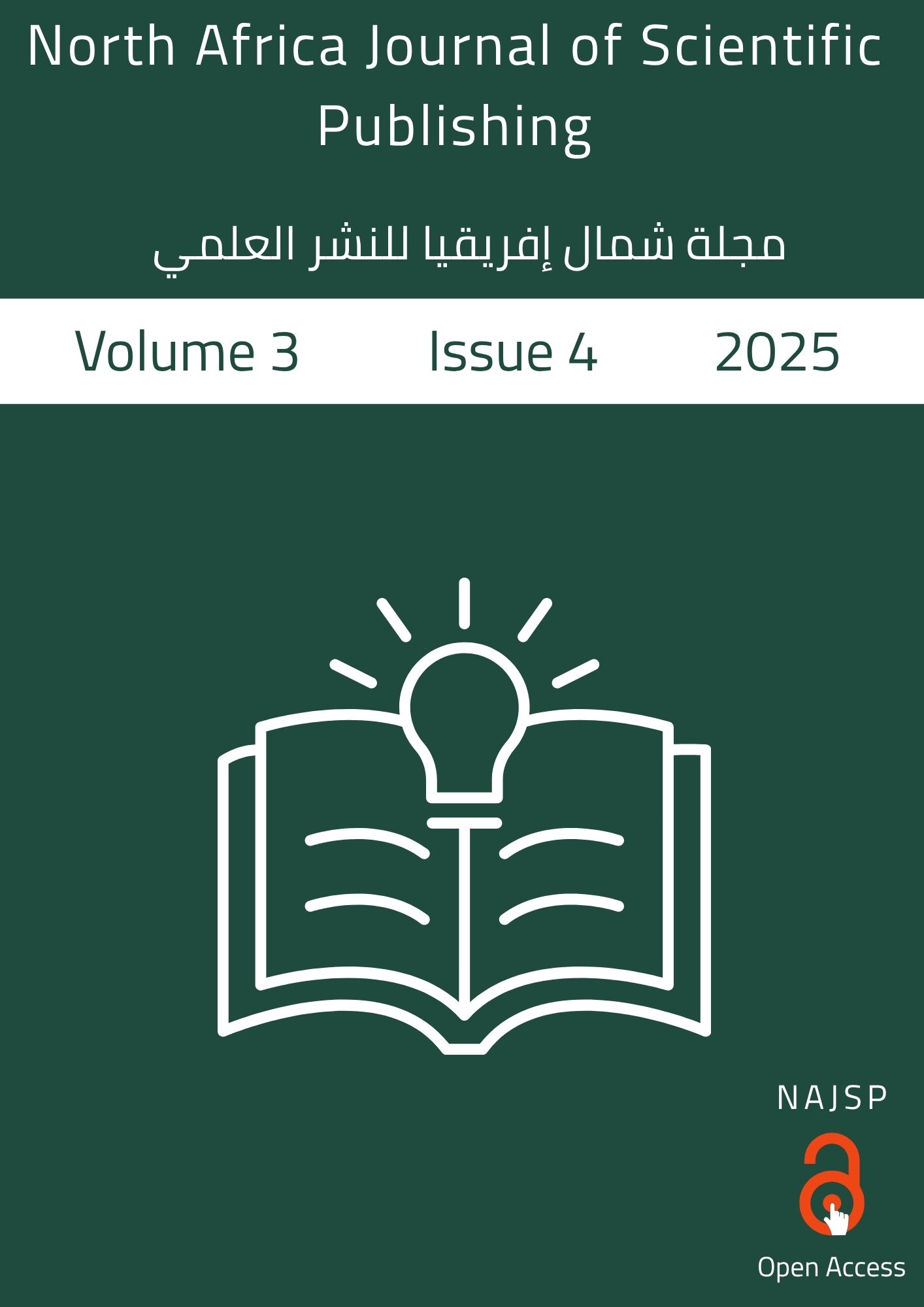Estimating Nitrate and Manganese Levels in Drinking Water: A Case Study from Al-Jamil, Riqdalin and Zellten in Western Libya
Keywords:
Drinking Water, Nitrate, Manganese, Spectrophotolab 7100VIS, Hydrotest HT1000Abstract
This study examines the quality of drinking water in the regions of Al-Jamil, Ragdalin, and Zalten through an assessment of nitrate and manganese concentrations in both desalinated and groundwater sources. A total of ten desalinated water samples and eight well water samples were collected and analyzed. The obtained results were evaluated in comparison with the drinking water quality standards specified by both Libyan regulations and the World Health Organization (WHO). Nitrate concentrations in the desalinated water samples ranged from 23.6 to 62 mg/L. Two samples (A5 and A9), with recorded values of 62 mg/L and 55 mg/L, respectively, exceeded the permissible limits established by national and international standards. Similarly, several well water samples (B2, B4, and B5), showing concentrations of 58, 52, and 55 mg/L, surpassed the maximum allowable levels set by Libyan and WHO guidelines. Additionally, samples B3, B6, and B7 exhibited nitrate concentrations of 47, 46, and 50 mg/L, exceeding the limit according to Libyan specifications alone. Manganese concentrations in desalinated water were consistently within acceptable limits, maintaining a concentration of 0.2 mg/L. In contrast, manganese levels in well water samples varied between 0.2 and 2.78 mg/L, with samples B4 and B6 exceeding permissible thresholds, recording 1.11 mg/L and 2.78 mg/L, respectively. These findings highlight the need for continuous monitoring and potential intervention measures to ensure safe drinking water quality in the studied regions.







